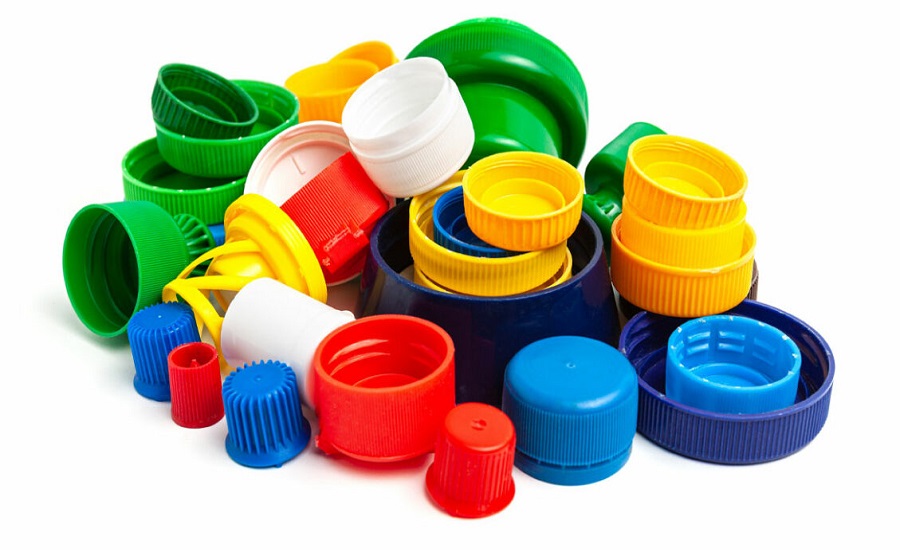The global plastic caps and closures market is poised for substantial expansion by 2032, driven by increasing demand across diverse end-use industries such as food and beverages, pharmaceuticals, personal care, and household products. These small yet essential components play a critical role in preserving product integrity, enhancing convenience, and ensuring safety and hygiene. With ongoing advancements in material science, manufacturing technologies, and consumer preferences, the plastic caps and closures market are undergoing a dynamic transformation.
Get a Free Sample Report – https://www.skyquestt.com/sample-request/plastic-caps-and-closures-market
Plastic caps and closures are used to seal containers and bottles, preventing leakage and contamination while maintaining product freshness. These closures are manufactured using various types of polymers, including polyethylene (PE), polypropylene (PP), and polyethylene terephthalate (PET). They come in a wide range of shapes, sizes, and functionalities—such as flip-tops, screw caps, dispensing closures, and child-resistant types—catering to the specific needs of different applications.
The market is witnessing a steady shift toward lightweight, tamper-evident, and recyclable closures, reflecting both environmental concerns and economic efficiency. Brands are increasingly opting for sustainable alternatives that do not compromise on performance or user experience.
Market Drivers
One of the primary growth drivers is the booming packaged food and beverage industry, which relies heavily on high-performance plastic closures to enhance shelf life and improve consumer convenience. The increasing consumption of bottled water, ready-to-drink beverages, dairy products, and condiments has spurred demand for advanced closure solutions.
In the pharmaceutical sector, the need for tamper-proof and child-resistant closures is escalating, especially with the rise in over-the-counter drugs and health supplements. Similarly, in the personal care industry, the push for attractive, easy-to-use, and protective packaging continues to stimulate innovation in closure design.
Urbanization, rising disposable incomes, and the growing trend toward convenience packaging in emerging economies further contribute to market expansion. Additionally, the e-commerce boom has heightened the importance of secure and spill-proof packaging, driving demand for reliable plastic closures.
Make an Inquiry to Address your Specific Business Needs – https://www.skyquestt.com/speak-with-analyst/plastic-caps-and-closures-market
Plastic Caps and Closures Market Segments Analysis
Global Plastic Caps and Closures Market is segmented by Caps Type, Material Type, Container Type, Technology, End-use Industry and region.
Based on Caps Type, the market is segmented into Screw Closures, Snap Closures, Push-Pull Closures and Others.
Based on Material Type, the market is segmented into Thermoplastic and Thermosets.
Based on Container Type, the market is segmented into Plastic and Glass.
Based on Technology, the market is segmented into Post-mold TE band, Compression molding and Injection molding.
Based on End-use Industry, the market is segmented into Food, Beverage, Healthcare, Cosmetics & toiletries, Automotive, Chemical and Others.
Based on region, the market is segmented into North America, Europe, Asia Pacific, Latin America and Middle East & Africa.
Market Challenges
Despite its growth prospects, the plastic caps and closures market face several challenges. Environmental concerns related to plastic waste have led to regulatory pressure and consumer pushback, prompting manufacturers to invest in eco-friendly materials and recycling initiatives. Volatility in raw material prices and the energy-intensive nature of plastic processing also impact production costs and profitability.
Competition from alternative materials, such as metal and glass closures in premium segments, is another hurdle. Nonetheless, the versatility, lightweight nature, and cost-effectiveness of plastic closures continue to give them an edge in mass-market applications.
Take Action Now: Secure Your Plastic Caps and Closures Market Today – https://www.skyquestt.com/add-to-cart-buy-now/plastic-caps-and-closures-market
Plastic Caps and Closures Market Top Company Profiles
- Amcor plc (Australia)
- AptarGroup, Inc. (United States)
- Berry Global Group, Inc. (United States)
- Silgan Holdings Inc. (United States)
- Closure Systems International, Inc. (United States)
- Guala Closures S.p.A. (Italy)
- BERICAP GmbH & Co. KG (Germany)
- Berk Company, LLC (United States)
- ALPLA Werke Alwin Lehner GmbH & Co KG (Austria)
- Comar, LLC (United States)
- Pact Group Holdings Ltd. (Australia)
- TriMas Corporation (Rieke Packaging Systems) (United States)
- United Caps (Luxembourg)
- Caps & Closures Pty Ltd. (Australia)
- Caprite Australia Pty Ltd. (Australia)
- Pano Cap (Canada) Limited (Canada)
- Plastic Closures Ltd. (United Kingdom)
- Cap & Seal Pvt. Ltd. (India)
- Phoenix Closures (United States)
- Hicap Closures (China)
Future Outlook and Trends
Looking ahead to 2032, the market is expected to witness innovations in biodegradable and compostable plastics, as well as advancements in smart closures equipped with tamper-detection and tracking features. Automation and digitalization in manufacturing processes will enhance production efficiency and customization capabilities.
Regionally, Asia-Pacific is projected to lead the growth trajectory, supported by its vast consumer base, expanding middle class, and rapid industrialization. North America and Europe will continue to emphasize sustainable packaging practices and circular economy principles, driving demand for recyclable and reusable closure solutions.
Read Plastic Caps and Closures Market Report Today – https://www.skyquestt.com/report/plastic-caps-and-closures-market
The plastic caps and closures market are set to evolve significantly by 2032, fueled by technological innovations, regulatory developments, and shifting consumer expectations. Companies that prioritize sustainability, design flexibility, and cost optimization will be best positioned to capitalize on emerging opportunities in this vital segment of the packaging industry.
